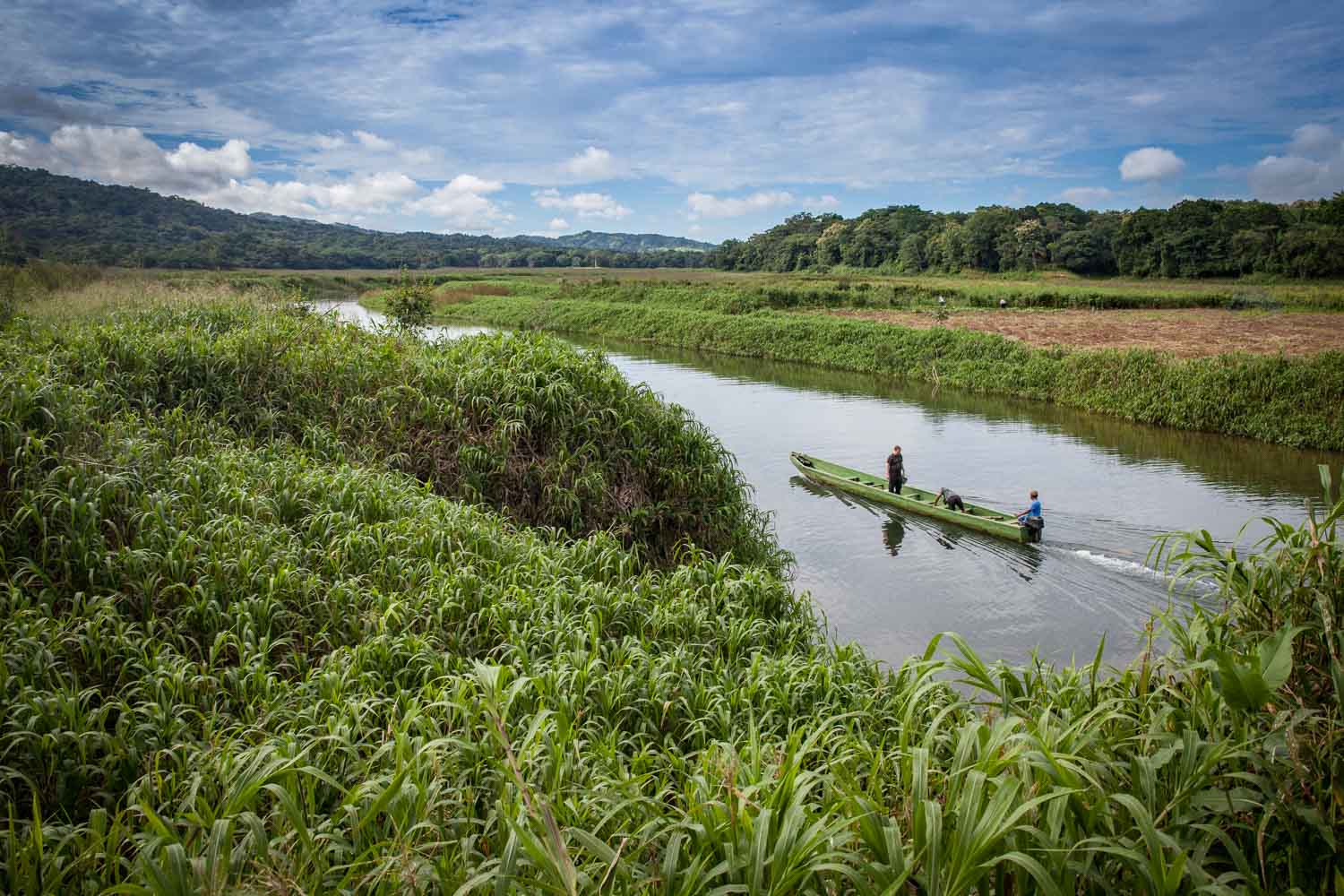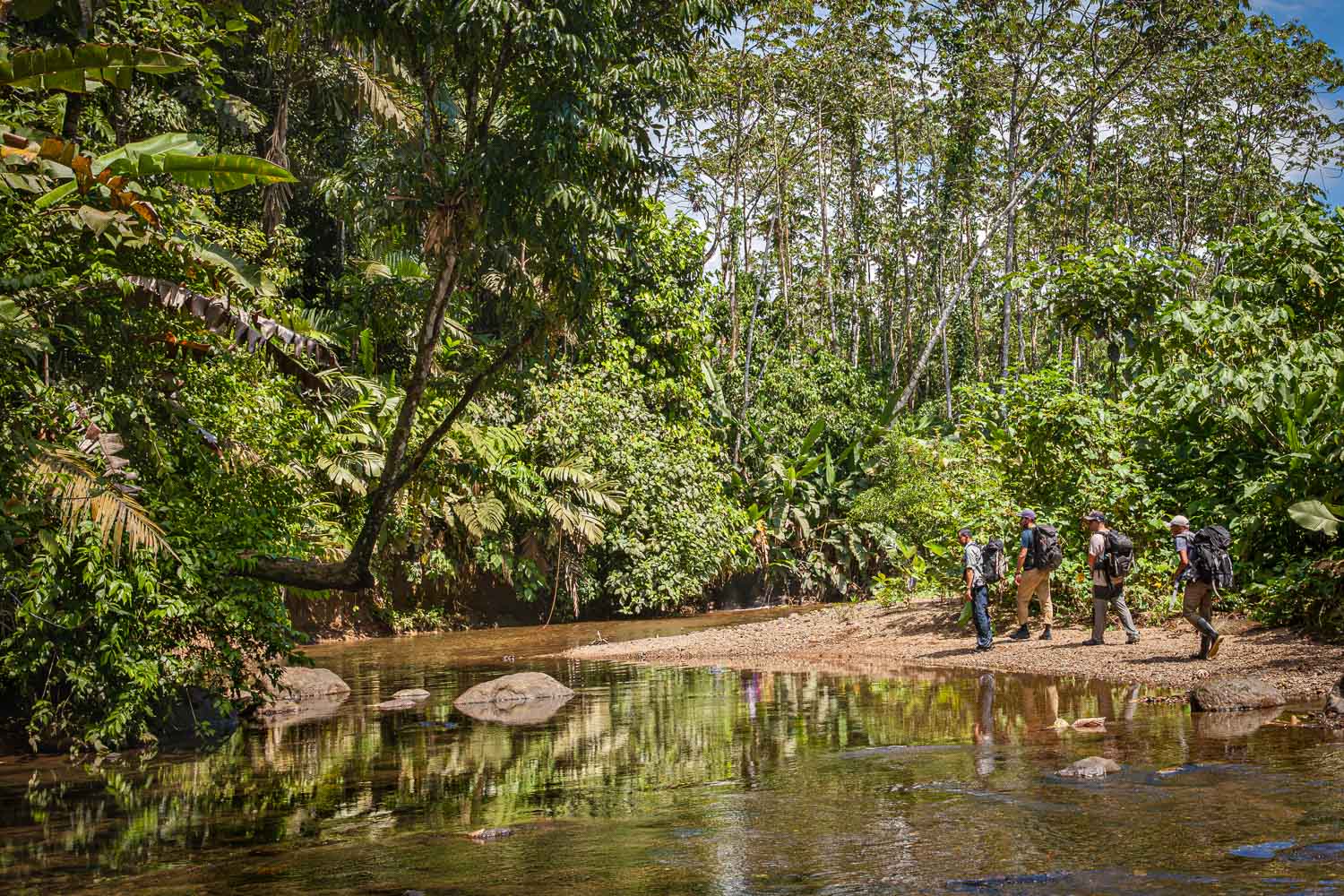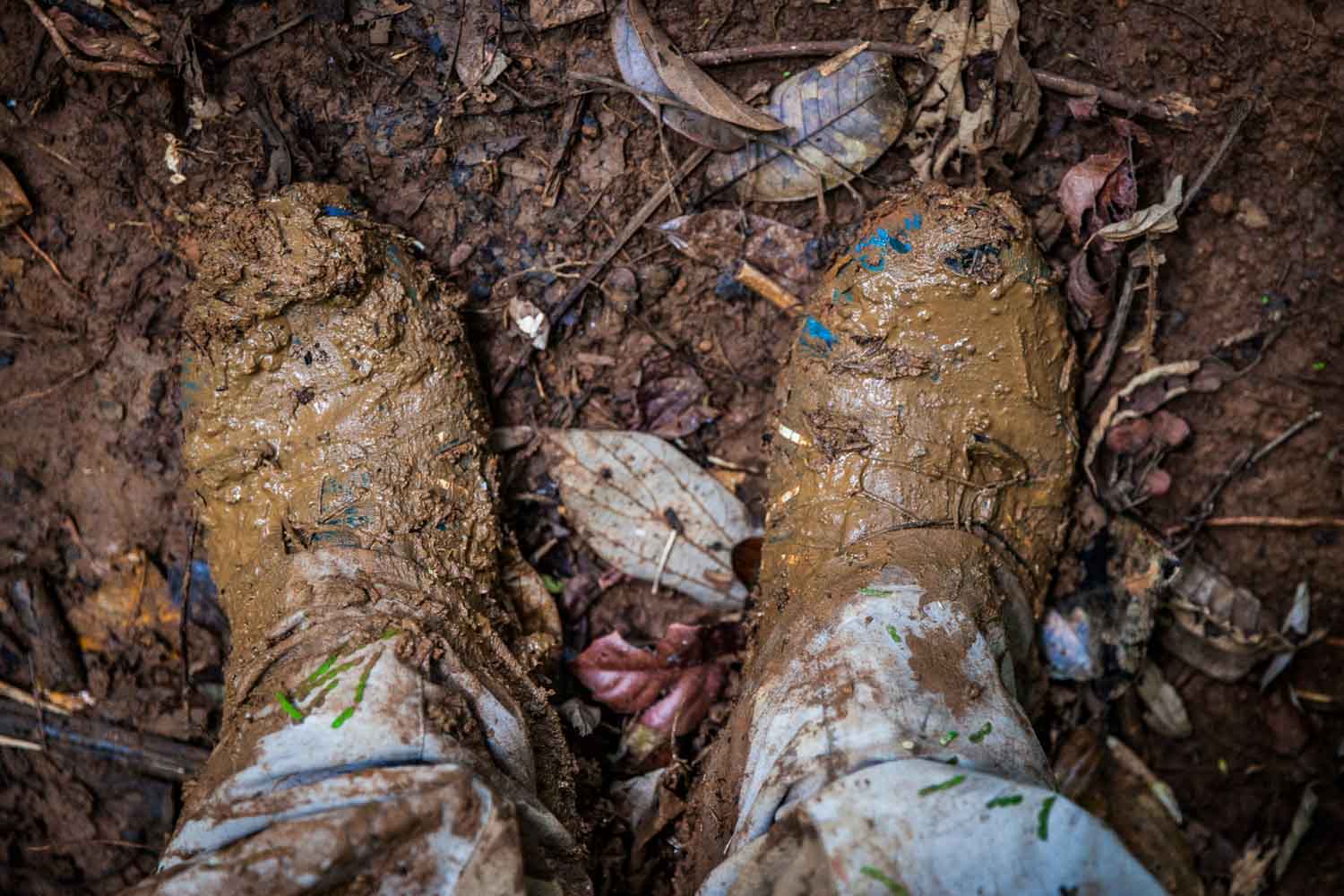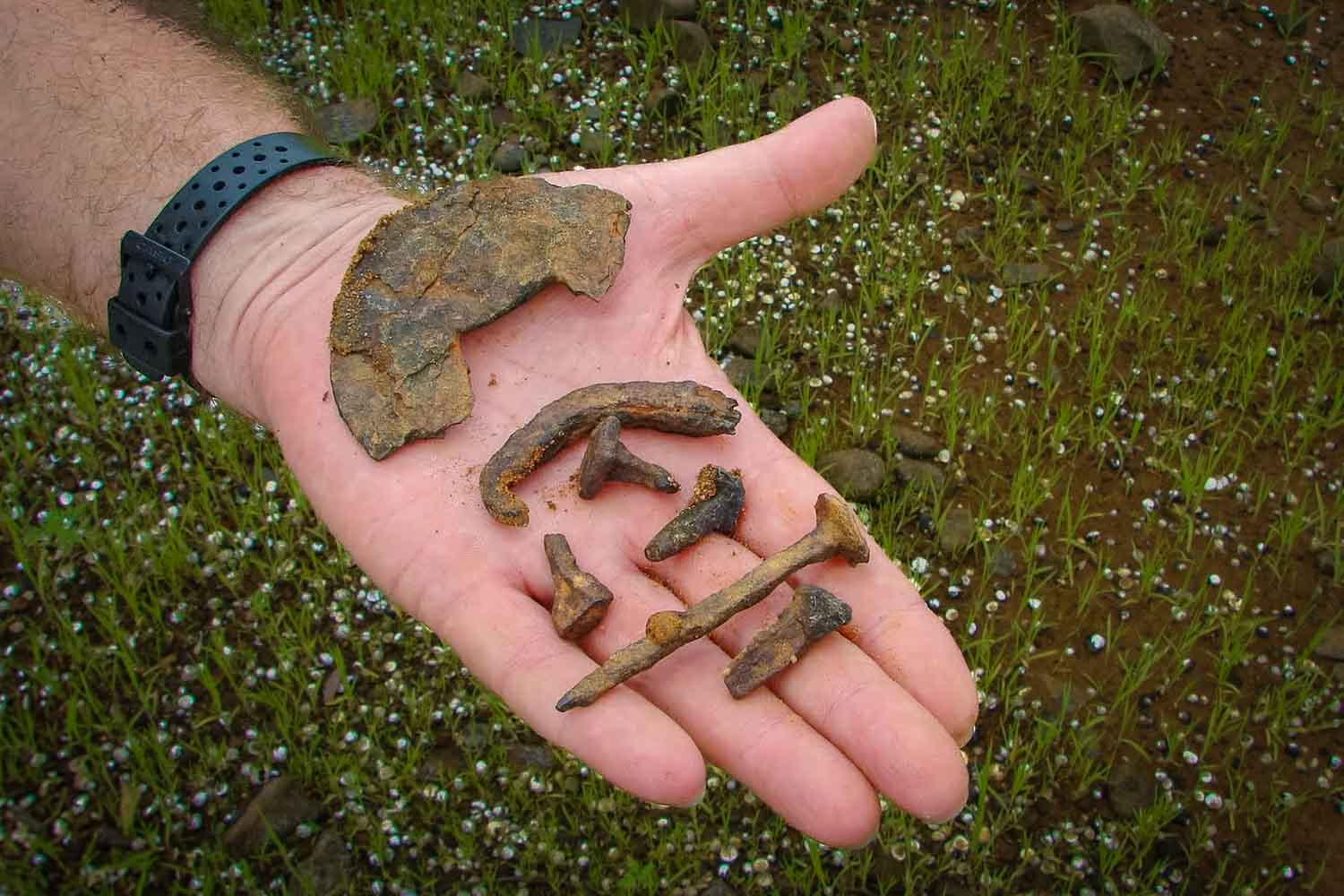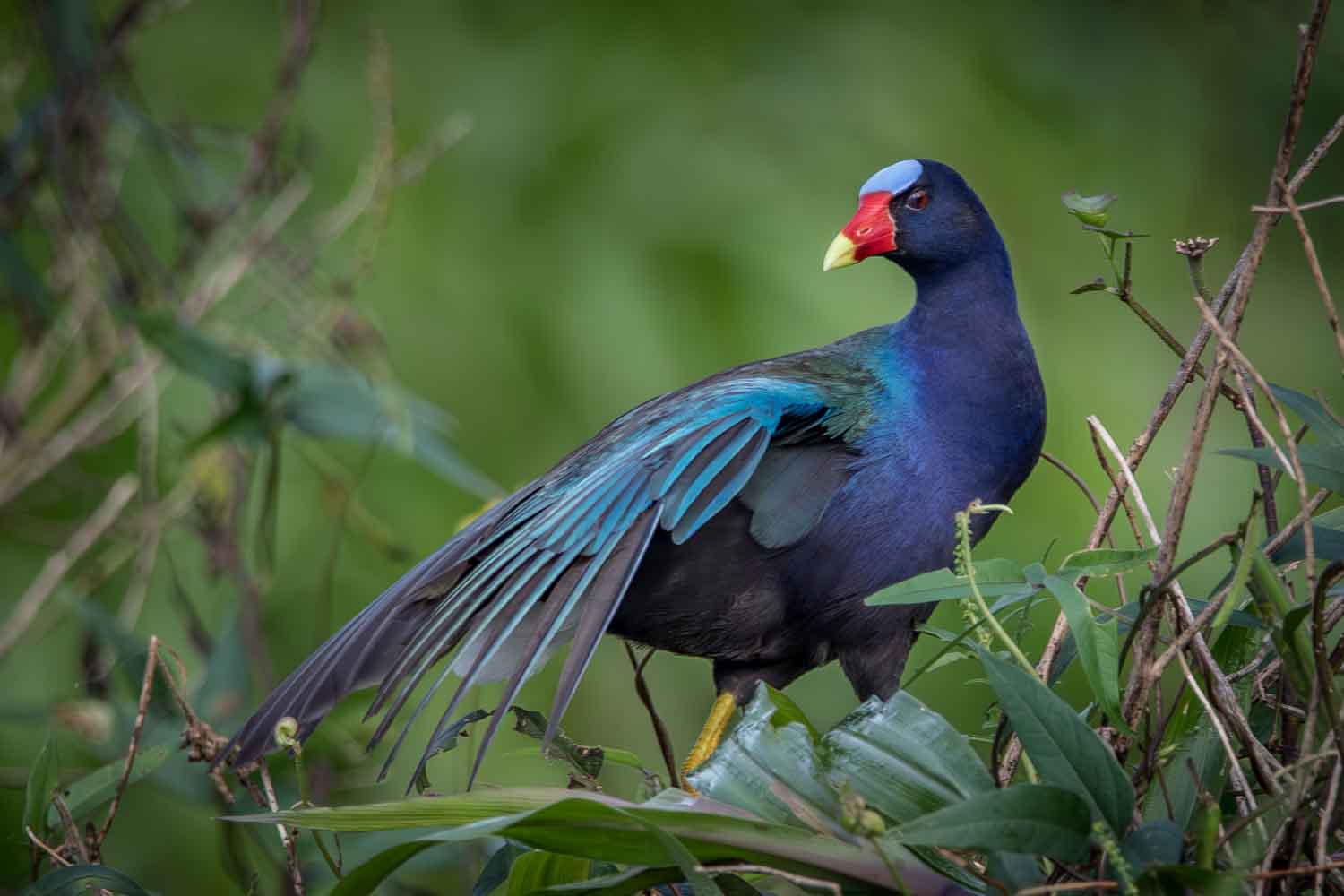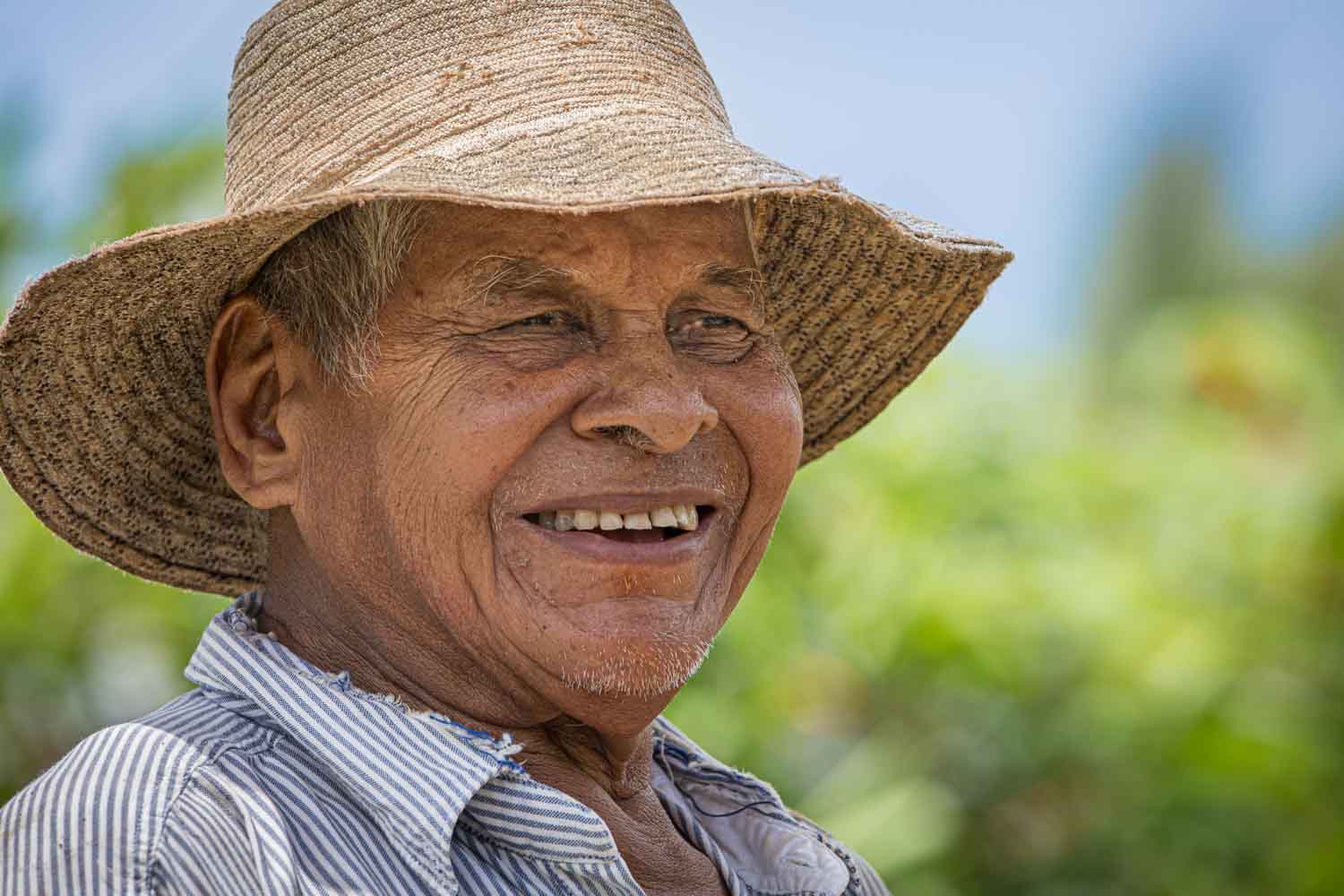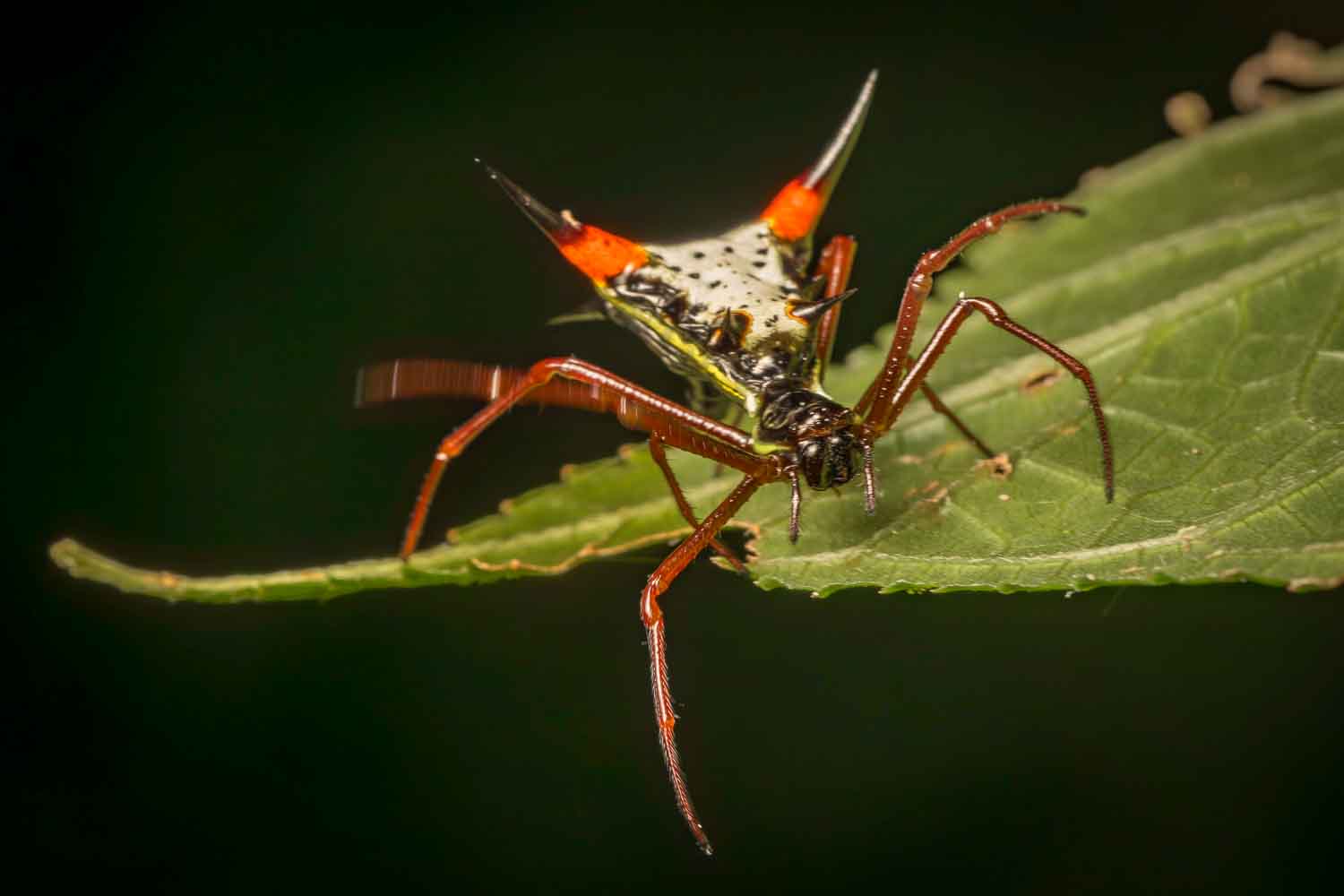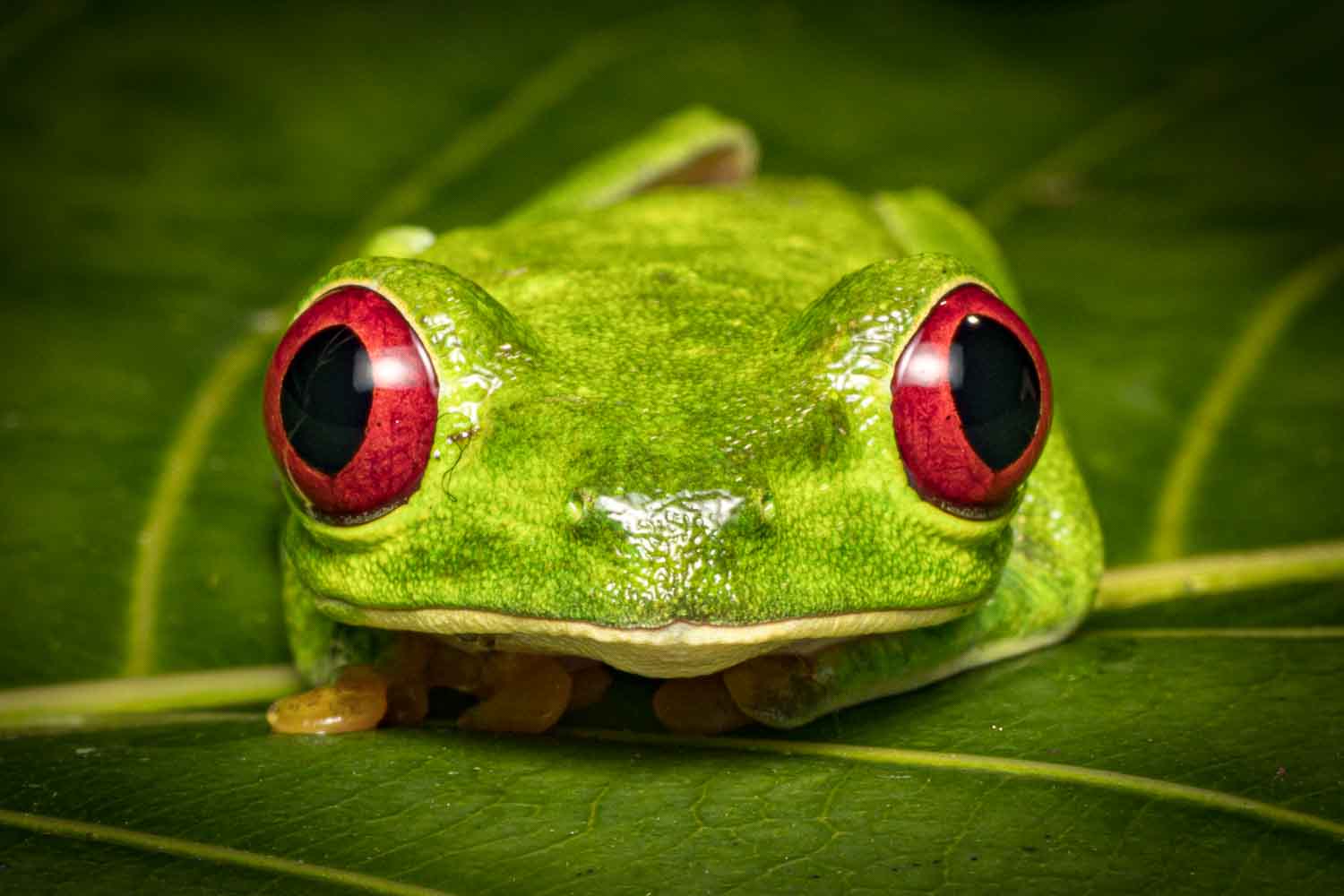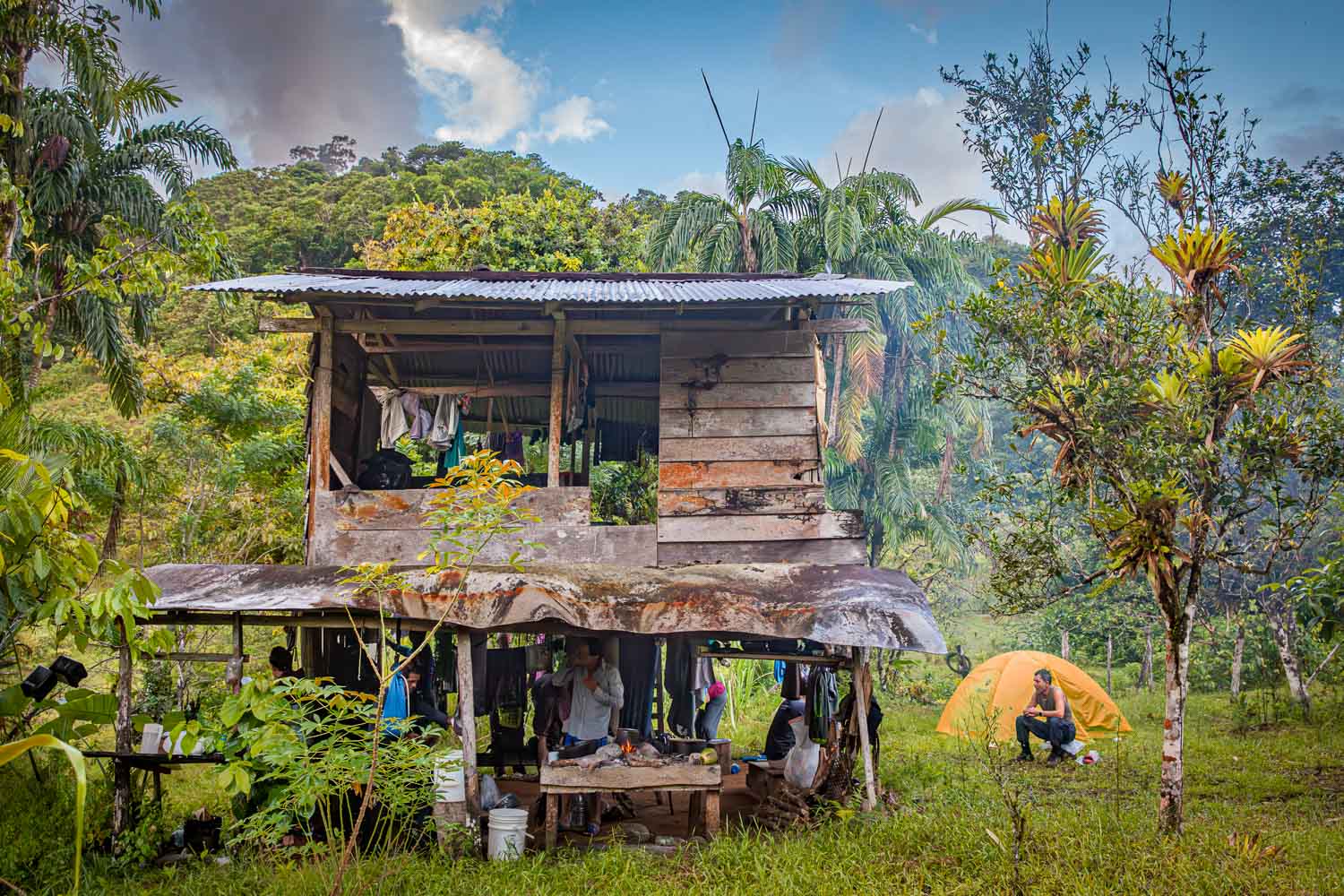Published in:
![]()
Germany’s third-largest national daily newspaper
Reach: 769,000 readers
It is an exhausting slog, but worth every single moment! Thoughts oscillate between curses and delight. For eight hours, seven fellow hikers have been battling their way through Panama’s dense rainforest, led by the experienced guide and machete virtuoso Molinar Torribio.
We follow the historic trade route – the Camino Real – of which scarcely more than a faint memory remains some 165 years after its last commercial use. The jungle has long since absorbed or washed away nearly all the cobblestones, boundaries, and markings. Perhaps nature intends to show that all that is human is fleeting.
Right here the Camino Real began
“It was right here that, in 1519, mules were first loaded with silver bars, gold, and other conquistador plunder from Peru. It was right here, in the old town of Panama City – the first European settlement on the Pacific – that the Camino Real began,” explains Christian Strassnig, his outstretched finger sweeping from the square before us towards the north, “and over there, five days and ninety kilometres away, in Portobelo on the Caribbean coast, it came to an end. There, the treasures were transferred onto ships that then sailed to Europe.”
Looking back at the boat that dropped us off a few minutes ago on the northern shore of Lake Alajuela, the starting point of our long day’s stage.
The Austrian Christian Strassnig dedicated 20 years of his life to researching the Camino Real. Like no other European, he knows the intricate details of the historic trade route: “ The Camino Real is a precursor to the Panama Canal – one of the most heavily used waterways in the world.
It became overgrown and was forgotten
For over 350 years, Spanish colonists transported mainly gold and silver from South America across the narrow strip of land between the Pacific and the Atlantic. With the completion of the railway in 1855, the Camino Real became obsolete. It became overgrown and was forgotten – for a good 150 years. It was only in 2008 that an expedition, which I took part in, rediscovered the original route. Today, this hidden gem offers adventurous hikers a unique journey into the past.”
Time and again, nature along the Camino Real rewards you with marvellous views of the river and the magnificent rainforest.
In Panama City, the Tour Begins
The starting point of our journey is right here, at the foot of the tower of the Cathedral of Panama Viejo. Here, up to 300 mules were loaded with 100 kilograms of gold and silver each. Mule drivers led two to three animals at a time, while soldiers secured the caravan, which transported goods with a present-day market value of roughly 30 million euros.
“These are remnants of the Camino Real”
Bustling Panama City has long since swallowed up the remains of the Camino Real. Therefore, we take a bus to Lake Alajuela and board a boat there. And where, then, is the Camino? “
It lies mostly underwater here. In 1935, Lake Alajuela was created as a 50‐square-kilometre water reservoir for the Panama Canal and for power generation, ” explains Christian.
We walk the Camino Real in Panama for well over eight hours a day – through ankle-deep mud, up and down steep hills, through paths cleared with machetes and knee-deep rivers – which places the highest demands on footwear and clothing. On the physique anyway.
We land on the eastern shore of Lake Alajuela. Just a few metres from the bank, light brown stones stand out clearly against the ground. “
These are the remnants of the Camino Real – it was up to three metres wide here. The edge stones are still well discernible,
” says Christian, “and I’ve found nails, spurs, and fragments of horseshoes right here on the palm of my hand.”
“Tomorrow, in the rainforest, you’ll understand what I mean.”
And why was a stone path laid? Christian continues: “Without stones, the mules would have sunk into the mire or slipped constantly. Tomorrow, in the rainforest, you’ll see what I mean. Now, off to the night camp.”
Iron artefacts found between the cobblestones of the Camino Real: Fragments of horseshoes and nails (Photo by Christian Strassnig).
The boat slowly cruises along a side channel of the lake. Reeds, waterlilies, and other aquatic plants draw nearer. We stir up countless seabirds – ospreys, egrets, bat falcons, and sun bitterns – all foraging in the shallow water for fish, frogs, earthworms, snails, insects, and crustaceans.
Quebrada Ancha: A last piece of civilisation
The side channel narrows as we pass a young crab heron, peering from a villager’s boat in search of food. On a rise, huts come into view. “Quebrada Ancha – a final slice of civilisation before we plunge fully into the jungle,” declares Christian, sounding somewhat dramatic.
Surprising rain shower – and wonderful cooling – during the crossing on Lake Alajuela.
The Hike along the Camino Real Is challenging
It is 3.30 in the morning the next day. In the distance, howler monkeys grunt while roosters in the village crow their first greetings. After sunrise, we take the boat to the northern tip of the lake to resume yesterday’s route. An elegantly wading blue heron remains undisturbed by our presence, as does the dwarf motmot – which, with its vivid blue plumage, red beak tipped with yellow, and light blue forehead, appears rather inclined to show off.
The rainforest engulfs us
Christian drops us off and returns by boat to collect us again in Portobelo in a few days. In just a few minutes, darkness falls; the rainforest engulfs us.
After a short while on slippery paths, steep slopes, and amidst overgrown river valleys with consistently high humidity, it becomes clear to everyone: this expedition demands sheer determination and endurance. Every 90 minutes, I wring out the sweat-soaked towel draped around my neck.
A purple gallinule foraging for food in the shallow water near the shore of Lake Alajuela.
Around midday, we reach a clearing that reveals one final, entirely intact section of the Camino. The bulky cobblestones lie packed together, bounded by larger, taller edge stones. Fellow hiker Alex remarks: “This stretch of path is on private property. We can only hope that the local farmers – the campesinos – won’t pave it over to convert the land for livestock farming.”
“All the greenery stretching to the horizon is mine”
Half an hour later, we take a break on a hill in front of a finca. It belongs to a campesino straight out of a picture book: Genaro Hernandez, 84 years old. He has lived here in the Chagres National Park since the early 1960s. From his horse, he looks down at us sweaty hikers with curiosity and a little amusement. “All the greenery stretching to the horizon is mine,” he declares with pride, “otherwise I get nothing!” This is an understatement. He claims about 100 cows as his own – each of which can fetch up to approximately 1,300 euros.
A ‘campesino’ (local farmer) straight out of a picture book: Genaro Hernandez, 84 years old, has lived near the Camino Real in the middle of the Chagres National Park since the early 1960s.
Few things escape the keen eyes of Alex, Molinar, Irvin, and our porter and companion Eduviges de Leon. They spot the stunning Adelpha cytherea butterfly and the tiny spider known as Micrathena sagittata. The vivid colours of this barely one-centimetre creature likely serve to attract prey, while the spines on its abdomen provide a means of defence.
Then, finally – after well over eight hours of net walking time – we reach our night camp: an arable field serving as a tent site and an open barn with a modest cooking area. Nearby, the crystal-clear Boquerón flows by. All the hikers dive in.
‘The spider webs can reach two metres in diameter’
Exotic animals clamor in the rainforest
The following day, after an hour’s walk, the path leads over a carmine-coloured ground. Alex explains: “That is sand from leaf-cutter ants. They carry it out of their deep, labyrinthine nests, which are home to up to two million ants. ”Time and again, someone gets caught in spider webs – even the particularly sticky ones.“ That was probably from a golden orb weaver. Their webs can reach a diameter of two metres, and the silk is stronger than nylon. Sometimes, hummingbirds and fledglings become ensnared in them,” Alex surmises.
After more than eight hours of hiking on the Camino Real in temperatures of around thirty degrees, we reach our camp for the night. The Boquerón flows nearby, where we cool off.
Our clothing clings to our bodies. Everyone moves silently and sweating, focused solely on the next step. The rush of the river accompanies us, intermingled with chirping, squeaking, crackling, buzzing, peeping, and grunting. The dense primary rainforest exacts sweat, strength, and endurance – without all this, there would be no experience, no depth, no adventure.
Everything man-made is transient
For centuries, mule drivers and soldiers encountered the same force of nature, hearing the same spectrum of sounds. Today, scarcely any traces of the Camino remain in the rainforest. The stones have slipped, become overgrown, and lie buried. This too is an experience: everything man-made is transient.
A specimen of the spider species Micrathena sagittata about one centimetre in size: The bright colours presumably help to attract prey, while the spines serve as defence.
In the afternoon, we hear the rumble of thunder. “Please, no rain,” is the silent plea on every face. Fortunately, it remains dry – no one wishes to experience the path transforming into a muddy wasteland during a downpour. Suddenly, that staccato tapping resumes. A temple-spotted woodpecker probes the bark of a tree in search of ants, beetles, or larvae. Minutes later, a sedentary companion appears: a broad-billed motmot, sitting motionless in the tree as it waits for insects to flutter past.
A red-eyed tree frog, whose enormous eyes seem to mesmerise us
Even after darkness falls, Alex is unstoppable. With a torch, he scours the vicinity of our night camp for amphibians. Elated, he returns with two specimens: a banana tree frog – capable of living at altitudes of up to 2400 metres – and a red-eyed tree frog, whose enormous eyes seem to mesmerise us.
A red-eyed tree frog. If you touch its rump, its eyes widen.
Portobelo: A UNESCO World Heritage Site
The final day of our hike follows the Cascajal River. After six hours, we reach a main road where a bus transports us to the terminus of the Camino Real – the Bay of Portobelo, discovered by Columbus in 1502. It was here that Spanish ships loaded the treasures carried along the Camino and sailed them to Europe.
Here the famous pirate Francis Drake died
Portobelo is a UNESCO World Heritage Site – a place steeped in history where one can journey into the past through its fortifications, the royal customs house, and its plazas. The English pirate Francis Drake – namesake of the Drake Passage – attacked Portobelo for its riches. Days later, he succumbed to a gastrointestinal infection and was buried off Portobelo’s coast.
Under this open shelter, we protect ourselves from the rain, prepare food and attach hammocks. Dense rainforest can already be seen in the background.
Now we sit – freshly showered and with a cool beer in hand – on the hotel terrace, gazing out over Portobelo Bay. In retrospect, the hardships of the four-day trek from the Pacific to the Atlantic hardly seem as grueling as they once appeared.
Such an adventure can only be experienced here
The centuries-old history of the colonial buildings, the legendary silver and gold treasures, the pristine rainforest, and the captivating flora and fauna – all of this was, and remains, so astonishing that every exertion is forgotten and one feels proud to have been pushed to one’s very limits. Such an adventure can only be experienced here.
Read now:

TRILUX Grand Sales Opening
Over 500 participants voted me the best keynote speaker
2 Min.I feel very honoured for the award: “Best Keynote Speaker”, chosen by over 500 participants of the TRILUX Grand Sales Opening from 17 countries. Many thanks and a big bow!

Where you can experience your green miracle
Madeira – 50 Shades of Green
23 Min.The sister islands of Madeira and Porto Santo are each beautiful in their own way and have much to offer nature lovers: fantastically dense laurel forests, countless hiking trails of any difficulty and lush flora.
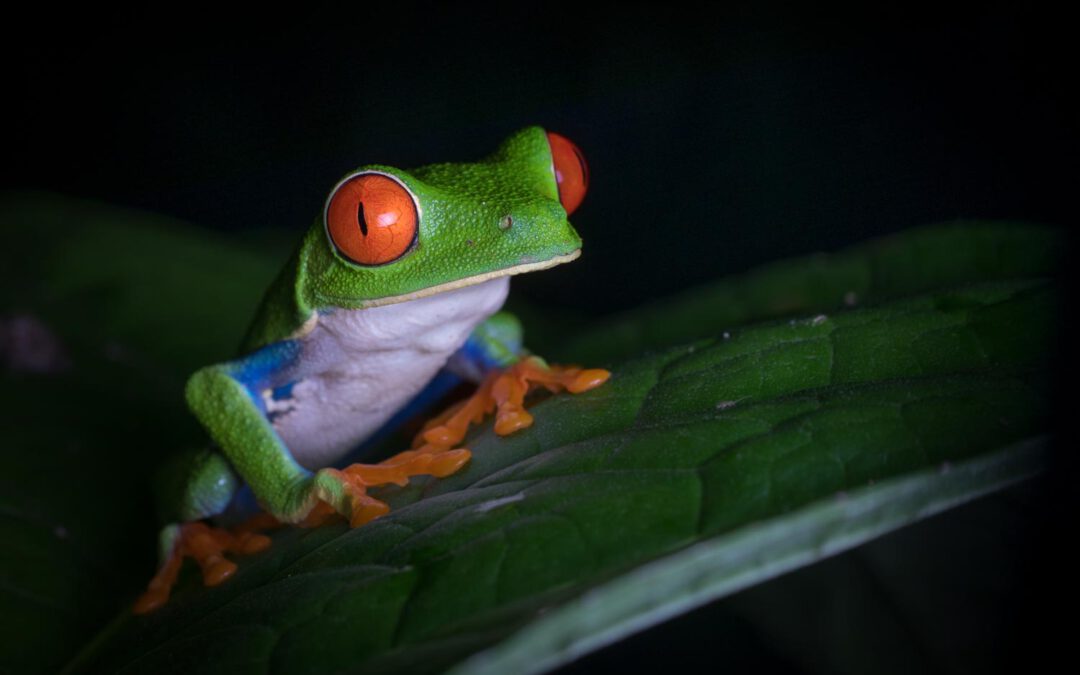
Colourful eco-paradise
Costa Rica photo gallery
< 1 Min.Shortly before the 2nd lockdown, I take the opportunity for a short escape to Costa Rica. In almost deserted national parks, an exuberant plant and animal world awaits me. A detailed article on my trip will appear in Terra magazine in April 2021.


